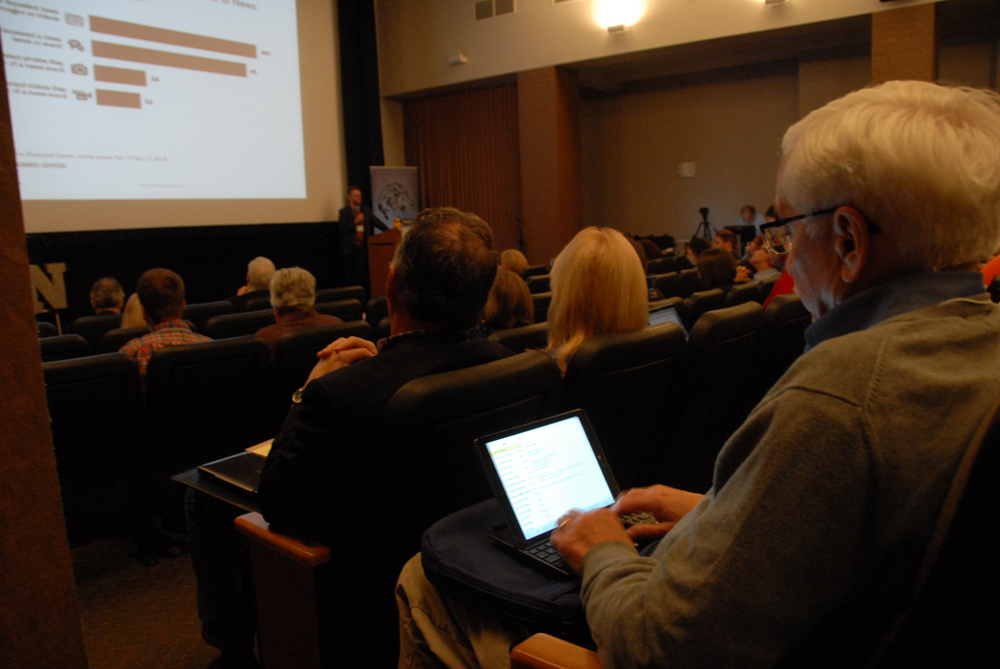Pew Research Center’s Holcomb updates publishers on state of local news
As independent online publications become more prevalent on the digital landscape, it's important for publishers to understand where readers access

LION Summit coverage by Jacob Clabes, KyForward
As independent online publications become more prevalent on the digital landscape, it's important for publishers to understand where readers access their local news and the part that social media plays in that process. Jesse Holcomb, associate director of Journalism Research with the Pew Research Center, broke down the numbers for LION Publishers at the 2015 summit at Columbia College in Chicago Friday.
The data reflect some interesting generational shifts in how readers access local news. Television has historically dominated the local news landscape, and that is still the case today. But mobile devices are quickly gaining steam, especially among younger users.
“The local news experience for American audiences is mediated on the social web,” Holcomb said. “Younger news consumers are getting news about their community on their mobile phone and they're doing so at rates just as high as other groups, if not higher.”
Over the past year, the Pew Center collected data from three very different communities, Denver, Colorado, Sioux City, Iowa and Macon, Georgia. The study found data varies greatly from community to community, the result of many socio-economic factors. Broadband adoption was high in urban and more affluent communities and remained stagnant in poorer and more rural areas.
The study found that two-thirds of American adults own a smartphone. Two-thirds use those smart phones to read about news and events, and half access local news and event information from social Media.
Holcomb stressed that although the numbers do provide a some solid data for publishers to use as a guide, it's important to note that national data can vary from community to community.
“The digital revolution is uneven across communities,” he said. “That is important when looking at some of this national trend data. There are huge segments of the population that aren't engaged online.”
Holcomb also cited the Media Deserts Project conducted by Ohio University. The project set out to map digital outlets across the country and what their communities look like. The project found highly engaged core local news audiences to be more likely to follow local news sites.
“The data shows that we tend to follow what's around the corner, rather than what's over the next hill,” he said.
As the digital landscape continues to evolve, one thing is certain, Holcomb said. The next five years will offer some interesting opportunities and challenges in the digital scene, as publishers strive to find a ways to adequately track how readers access their information.
“We're now in this kind of arms race with digital audience metrics companies,” he said. “And the long range goal is for it to be standardized.”
Sign up for the weekly newsletter
Join the LION mailing list to get our weekly roundup of opportunities and resources for news entrepreneurs. View our most recent issues.
Related Articles
BoiseDev’s winning secret to selling newsletter ads: Only local news, only local ads
The site earns 60 percent of its advertising revenue through its high-open-rate email projects, in partnership with local ad agencies.
AI adoption: How Lede AI helps small publishers quickly generate content readers love
Helping news organizations leverage artificial intelligence with a tool that puts their readers and staff first
Social is down, newsletters are up: How audiences are finding LIONs in 2024
Changes to social media and search prompt publishers to shift strategy.
